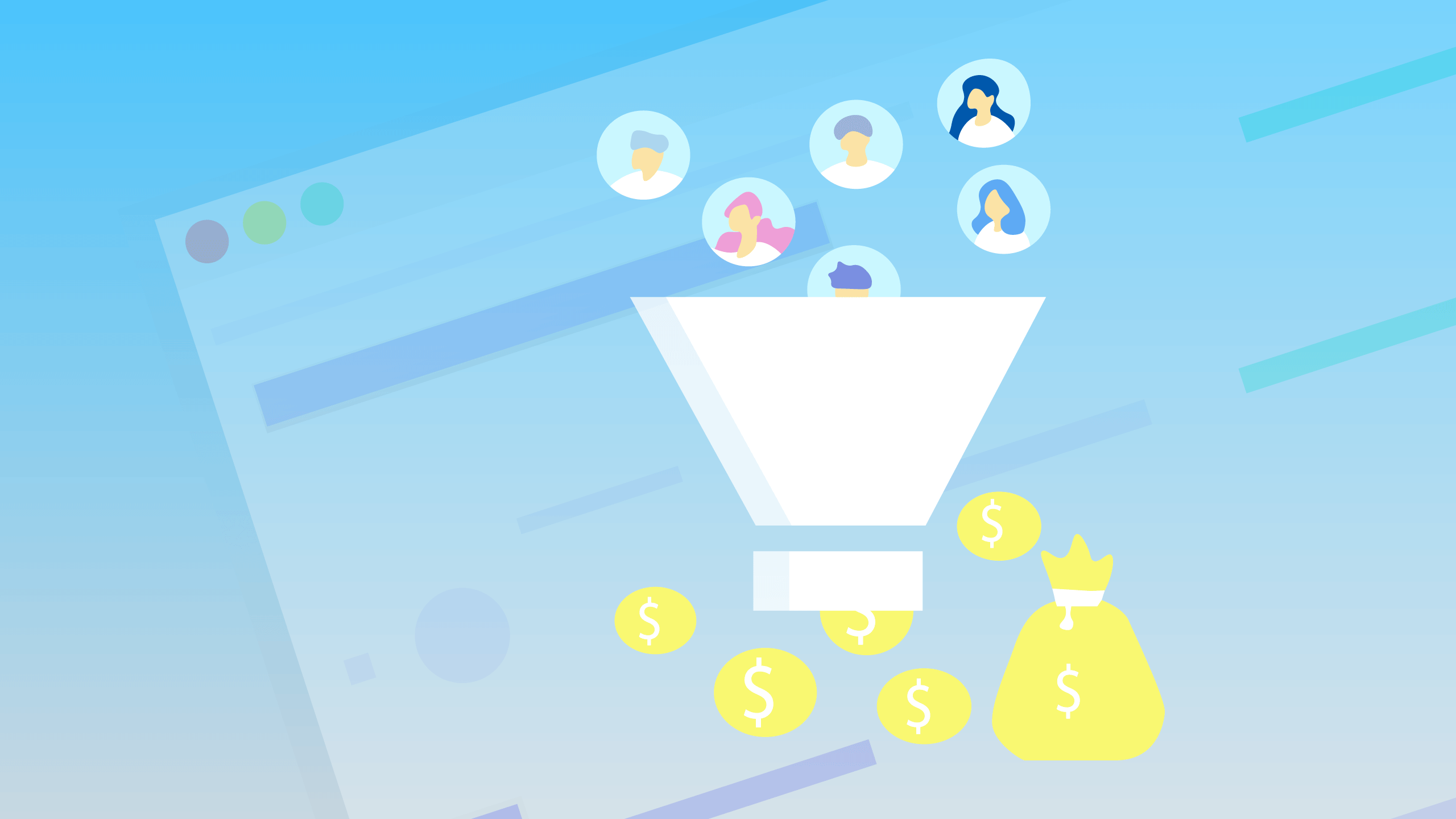Having a lot of visitors to your website is a great thing. However, traffic alone is often not the right measure of success. It is much more interesting – and also economically relevant – to know how many of these visitors actually become real customers. In this article, I will therefore show you how you can effectively increase the turnover of your online shop with conversion optimisation.
What is conversion optimisation?
Conversion optimization simply explained:
Conversion rate optimization (CRO) – also known as conversion optimization – is concerned with increasing the conversion rate. This is the percentage of visitors to a website who perform a previously defined action.
Conversion optimisation is not a project, but a process: just as successful companies work to constantly improve their products and services, they also work to optimise their conversion rate.
Your competitors also use conversion optimisation as a permanent, strategic optimisation process. Once improvements have been achieved, they are lost again over time. It is therefore extremely important to implement conversion optimisation as a sustainable and long-term process within the company.
The discipline is inherently data-based: A recommendation that has worked for one site does not necessarily have to work for all other sites.
However, a catalogue of proven and scientifically supported methods can be derived from the experiences of various experiments. I would like to present a few of these methods and best practices in this article.
WooCommerce Hosting
With WooCommerce hosting, you can launch your own online store quickly and securely and manage it professionally – without any technical hurdles. Check our Raidboxes WooCommerce Hosting now.
7 tips for conversion optimisation
Before we go into detail, I would like to mention one important aspect that is a basic prerequisite, so to speak, and on which the rest is based: Around 95 per cent of all purchasing decisions are known to be made unconsciously. This means that it is not only the first impression that counts, but also the overall impression that a visitor has of the site.
Factors such as error-free functionality and fast loading times play a major role here. If these are not given, there is no solid basis on which to optimise and build. Below you will find a few approaches that will give you an insight into where and how you can optimise your site:
- The 2-second rule
- Visual focus
- Features, benefits and advantages
- A call to action
- Reviews and customer testimonials
- Guarantee
- Storytelling
The 2-second rule
With a clear headline that delivers a value proposition, you will captivate visitors. Your visitors’ attention span is short, so you should get to the point as quickly as possible so that they don’t leave your site early.
On average, 8 out of 10 visitors read the headline. However, only 2 of these 10 visitors will also look at the rest of the page. So if you formulate the main headline in an attractive way, significantly more visitors will read on.
Visual focus
In addition to the textual aspects, every landing page should have a clear visual focus that attracts the full attention of your visitors. This can be in the form of an appealing product image, a video or an image that conveys emotion.
The moment someone reads the headline, you need to draw their attention to the rest of the content via the image. At this very moment, something incredibly important is happening in your potential customer’s mind: They are engaging with the topic of your page.
The use of visual elements is so important because it is easier for most people to perceive and understand a topic in a visual context. This often has a direct impact on the conversion rate, as you will see.
Basically, the higher the quality of your images and text, the better your site will convert.
But how do we measure the quality of images and texts? It should be clear that images and graphics should be high-resolution and load quickly. If this is not the case, it creates friction, which negatively affects the conversion rate.
Similarly, your texts should not contain spelling mistakes – this looks unprofessional. With headlines and texts, you should think very clearly about what you want to say and whether it helps your visitors to understand your offer. If this is the case, then you are already on the right track.
Features, benefits and advantages
Thirdly, you should think about which special features you want to emphasise and – even more importantly – which advantages this will give your customer.
In most cases, the benefits / services solve your customers’ problem, for example by saving them time and / or money with your product or service. You can emphasise these benefits and explain them using the features to make them attractive.
Your customers don’t buy your product because of the features, but because of the benefits they expect from the features. This is the reason why many people always want the latest smartphone: They expect to gain an advantage from the newly added features.
Call-to-action only
In the fourth step, you should definitely present a single clear call-to-action (CTA for short). A landing page is often simply plastered with various CTAs – unfortunately, this rarely helps.
The reason why you don’t place a CTA, or at most one, at the top of the page is that your offer must first be understood and objections to your argumentation must first be dealt with.
If someone has grasped everything and understands what it’s all about, then they are more likely to take action and buy your product or get in touch – i.e. respond to your call to action.

Reviews and customer testimonials
Fifthly, you should include testimonials or reviews and other visual evidence. By including reviews and customer testimonials on your page, your visitors can judge for themselves whether the offer is for them or not.
Make sure that the reviews and customer testimonials are as genuine as possible and appear to be so, for example by including the names and companies of your customers or using a testimonial video. The reviews must be authentic.
The structure of such testimonials should always describe which problem or challenge was solved for your customers – and how.
Guarantee
In the sixth step, you should provide a guarantee. Such a guarantee can be organised in very different ways. For digital products or software, it is often a trial period, for a fitness studio a free trial training session, for online shops possibly a satisfaction guarantee.
It is important that the customer does not have the feeling that they are making a final decision from which they cannot withdraw. Also very important here: Your customer must feel comfortable when they finalise the purchase.
Storytelling
In the final step, your landing page should definitely tell a well-rounded story. Good storytelling will have a significant positive impact on your conversion rate.
Even if there is no direct, personal contact on your website or in your online shop: A story conveys exactly this feeling – or more precisely, empathy. Storytelling is a better way to reach your customers’ emotions. After all, you are taking them on a very special journey and telling them a story.
However, telling a story here does not mean telling fairy tales – it means selling your product packaged in a story. For example, you can illustrate the typical before and after scenario in a story.
The testimonials mentioned above are also suitable for good storytelling. And here I’ll give you another important tip: storytelling can and should be emotional. Talk directly about the problems and challenges that your customers typically have and talk about how you or your product can help them overcome these hurdles.
If you manage to use storytelling to take your customers on a journey and on a rollercoaster of emotions – with all the ups and downs – then they will be much more willing to convert. This doesn’t just apply to your website, by the way, but to all your sales channels.
Conclusion
As you can see, there are many ways to improve the conversion rate of your website or online shop. The approaches mentioned above are of course only a small selection. However, in most cases you can assume that implementing these principles will provide a good basis from which you can continue to optimise.
Once these basic principles have been implemented and your site is running quickly and error-free, you can move on to other conversion optimisation topics – and improve your conversion rate step by step with the help of A/B tests, for example.
What questions do you have for Nils about conversion optimization?
Please feel free to use the comment function. For more insights on WordPress, web design or online business, follow Raidboxes on Facebook or LinkedIn – or subscribe to our newsletter.

Leave a Reply